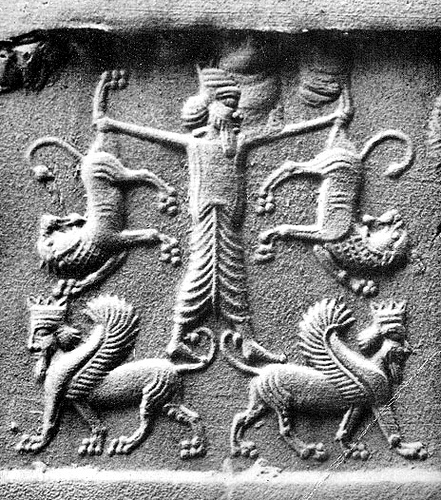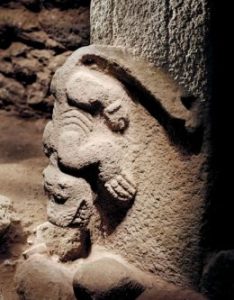This relief appears over the internet constantly being referred as depicting Gilgamesh. Since it appears as such even in the Assyrian International News Agency (books section), specifically, their scanned version of The Epic of Gilgamesh, I assume it might be just that.
-
![[PDF]](https://www.eixdelmon.com/wp-content/plugins/papercite/img/pdf.png) N. K. Sandars, The Epic of Gilgamesh: an English version with an introduction, Harmondsworth : Penguin Books, 1962.
N. K. Sandars, The Epic of Gilgamesh: an English version with an introduction, Harmondsworth : Penguin Books, 1962.
[Bibtex]@Book{epicofgilgameshe00sandrich, author = {Sandars, Nancy K.}, title = {The Epic of Gilgamesh: an English version with an introduction}, year = {1962}, date = {1962}, editora = {{Internet Archive}}, publisher = {Harmondsworth : Penguin Books}, pagetotal = {136}, url = {http://archive.org/details/epicofgilgameshe00sandrich}, urldate = {2016-05-16}, editoratype = {collaborator}, shorttitle = {{THE} {EPIC} {OF} {GILGAMESH}}, timestamp = {2016-07-28}, }
This picture is also referenced as such on Polat Kaya’s article on Göbekli Tepe.
In this Sumerian representation. King Bilgamesh, (the name is from Turkish word BILGI meaning “knowledge”), is holding the upper lions by one leg and upside down and also riding on the back of lion kings who might be mighty in power but when compared with “King BILGAMESH” (i.e., “GILGAMESH”), that is, man who has been enlightened with wisdom, are humbled. The “Bilgamesh” is a personification of “knowlege”, that is, the king who rules over everything else. The lower part of the garment on Bilgamesh is shown with a “fish-bone” design.
Note that the triple curved lines on the sides of the lion in Figure 5 of the Göbekli Tepe picture, is also shown on the sides and the rumps of the lions in the Sumerian Bilgamesh representation of Figure 7. This connects the Turanian Sumers to the culture of Göbekli Tepe. Sumeria and Göbekli Tepe are in the same geographical area. It should be noted that even in this Sumerian depiction, dots are used to indicate the toes of lions.
The referenced figure 5 is this one:






